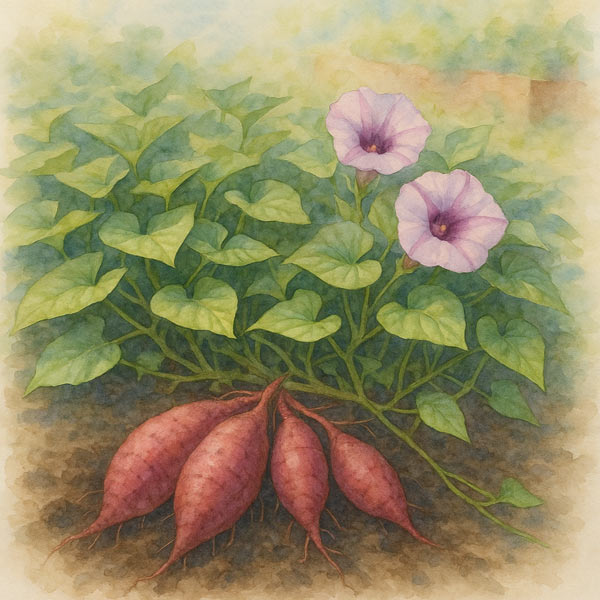If you’re tossing your sweet potato vines into the trash after harvesting, you’re throwing away some of the best organic material your garden will ever get. Those lush green vines are packed with nutrients and can transform raised beds into rich, healthy soil—naturally.
Here’s how to use them to build living soil that will feed future crops for months.
Why Sweet Potato Vines Are Soil Superfood
High in nitrogen – Perfect “green material” for soil microbes.
Breaks down quickly – Adds organic matter fast.
Worm magnet – Attracts earthworms, which aerate and fertilize the soil naturally.
Moisture-retaining layer – Creates a soft, spongy layer that holds water and keeps soil life thriving.
Never toss them in the trash when they can be put to work improving your garden.
How to Turn Sweet Potato Vines Into Living Soil
1. Harvest Sweet Potatoes, Leave the Vines
After digging up the sweet potatoes, don’t pull out the vines. Leave them right where they are, spread across the bed.
2. Chop for Faster Breakdown (Optional)
Cutting the vines into smaller pieces speeds decomposition, but it’s not required.
3. Cover With Cardboard
Lay flattened, unwaxed cardboard directly over the vines. Old delivery boxes, like Amazon boxes, work perfectly as long as you remove all tape, stickers, and labels first. Plain brown cardboard breaks down quickly and attracts worms.
Soak the cardboard thoroughly with a garden hose to hold it in place and kickstart decomposition.
4. Add a New Soil Layer
On top of the cardboard, spread 3–4 inches of a rich soil blend:
Compost
Worm castings
Garden soil or light topsoil
Level with a rake or hoe.
5. Plant Right Into It
The cardboard and vines will break down underneath while the new soil layer feeds your crops above. Over time, the decomposed vines turn into humus-rich soil.
The Payoff
By the time the next crop matures, the sweet potato vines will have completely broken down, leaving behind nutrient-rich soil teeming with worms and beneficial microbes. This simple no-dig method mimics natural forest soil building—and it costs nothing.
So, next time you harvest sweet potatoes, skip the trash pile. Those vines are some of the best organic matter you’ll ever get for free.
Free Mulch Sources to Try
You don’t need to spend money on bagged mulch—your best soil-building resources might already be around you:
Sweet Potato Vines – High in nitrogen and fast to break down.
Old Cardboard Boxes – Amazon or delivery boxes are perfect once tape and stickers are removed.
Palm Fronds – Great for shading soil and slowing evaporation.
Grass Clippings – Nitrogen-rich; apply in thin layers.
Fallen Leaves – Shred first for quicker breakdown.

